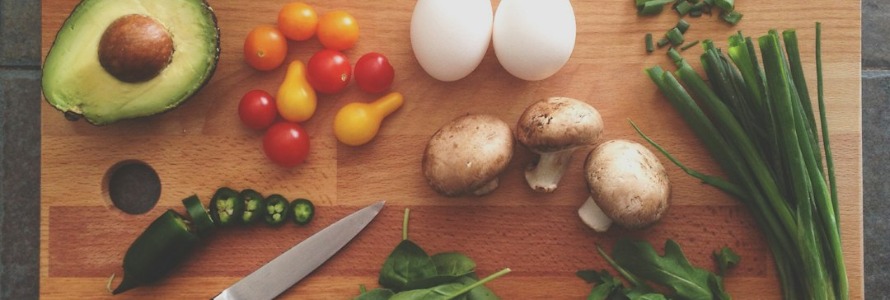
Food is a universal language that transcends cultures, bringing people together through shared experiences and flavors. Food writing is a unique genre that captures the essence of culinary delights, weaving stories that tantalize the senses and evoke emotions. Whether you’re a passionate home cook, a seasoned chef, or a food enthusiast, writing about food can be a deliciously rewarding endeavor. In this guide, we’ll explore the art of food writing, offering tips and techniques to help you craft engaging and mouth-watering prose.
The Essence of Food Writing
Food writing is more than just describing what you ate; it’s about conveying the experience of eating, the memories it evokes, and the cultural significance of the dishes. A well-crafted food piece transports readers to the table, allowing them to savor the flavors, aromas, and textures through words.
1. Start with a Captivating Introduction
A great food article starts with an engaging introduction that draws readers in. Begin with a vivid description of a memorable food moment, an intriguing anecdote, or a surprising fact. This sets the stage for the culinary journey and piques readers’ curiosity. For example:
“As I took my first bite of the freshly baked croissant, the buttery layers melted in my mouth, transporting me to a quaint Parisian café on a crisp autumn morning.”
2. Describe Flavors and Textures
One of the hallmarks of food writing is the ability to describe flavors and textures in a way that makes readers’ mouths water. Use descriptive language to bring the dish to life. Describe the taste, aroma, and mouthfeel of the food. Instead of simply saying a dish is “delicious,” delve into the specific flavors and textures that make it so. For instance:
“The tangy sweetness of the ripe tomatoes complemented the creamy mozzarella, while the fresh basil added a burst of herbal brightness. The crisp, toasted bread provided a satisfying crunch with every bite.”
3. Share Personal Stories and Reflections
Food is deeply intertwined with personal experiences and memories. Share your own stories and reflections to add depth and authenticity to your writing. Whether it’s a cherished family recipe, a memorable meal from your travels, or a cooking mishap that turned into a valuable lesson, personal anecdotes make your writing relatable and engaging.
4. Explore Cultural and Historical Context
Food is a reflection of culture and history. Provide context by exploring the cultural and historical significance of the dishes you’re writing about. Discuss the origins of the ingredients, the traditions associated with the cuisine, and the stories behind the recipes. This adds richness to your writing and helps readers appreciate the broader context of the food.

5. Maintain a Conversational Tone
A conversational tone makes your food writing more accessible and enjoyable. Write as if you’re sharing your food experiences with a friend over a meal. Use simple, straightforward language, and avoid overly technical or pretentious terms. A conversational style helps create a connection with your readers and makes your writing more engaging.
6. Incorporate Sensory Details
Engage all the senses in your food writing. Describe not only the taste but also the sight, smell, and texture of the food. Sensory details create a vivid and immersive experience for readers, allowing them to savor the dish through your words. For example:
“The aroma of freshly ground coffee filled the air, mingling with the sweet scent of vanilla. The golden crust of the pie glistened with a sugar coating, and as I cut into it, the warm, gooey filling oozed out, releasing a burst of apple-cinnamon goodness.”
7. Create a Narrative Arc
Like any good story, a food article should have a clear narrative arc. Begin with an engaging introduction, follow with the main body where you delve into the details and experiences, and conclude with a thought-provoking ending. This structure provides a logical flow and keeps readers captivated from start to finish.

SEO-Friendly Food Writing: Tips and Techniques
Crafting a delectable food article is essential, but making it discoverable online is equally important. Here are some tips for writing SEO-friendly food content that attracts readers and ranks well in search engine results.
1. Conduct Keyword Research
Start with keyword research to identify the terms and phrases your target audience is searching for. Use tools like Google Keyword Planner or Ahrefs to find relevant keywords with good search volume. Incorporate these keywords naturally into your title, headings, and throughout your article.
2. Craft Engaging Titles and Headings
Your title is the first thing readers and search engines see, so make it count. Create an engaging and descriptive title that includes your primary keyword. Use headings and subheadings to break up your content and make it easier to read. Include relevant keywords in these headings to improve your SEO.
3. Write Compelling Meta Descriptions
A well-crafted meta description provides a concise summary of your article and entices readers to click. Keep it under 160 characters and include your primary keyword. A compelling meta description can improve your click-through rate and boost your search engine ranking.
4. Use Internal and External Links
Incorporate internal links to other relevant content on your blog. This helps search engines understand the structure of your site and keeps readers engaged. External links to reputable sources can add credibility to your article. Just make sure the links are relevant and add value to your content.
5. Optimize for Readability
SEO is not just about keywords; it’s also about creating a positive user experience. Write in a clear and conversational tone. Use short paragraphs, bullet points, and lists to make your content easy to read. Avoid jargon and complex sentences that might confuse readers.
6. Encourage Reader Engagement
Encourage readers to engage with your content by asking questions, prompting comments, and sharing your article on social media. Engagement metrics like time on page, bounce rate, and social shares can impact your SEO. The more engaged your readers are, the better your article will perform.

Crafting Your Food Piece: Step-by-Step Guide
Now that we’ve covered the essentials of food writing and SEO, let’s walk through the process of creating your food piece step by step.
Step 1: Choose Your Focus and Theme
Select a focus for your food article that resonates with you. This could be a particular dish, a culinary experience, or a theme such as seasonal cooking or regional cuisine. Your theme will guide your writing and provide a cohesive thread throughout your article.
Step 2: Plan Your Narrative Arc
Outline the key points and experiences you want to include in your food piece. Think about the narrative arc and how you want to structure your story. Identify the moments, reflections, and details that will form the backbone of your narrative.
Step 3: Write an Engaging Introduction
Begin with a captivating hook that draws readers in. This could be an intriguing anecdote, a vivid description, or a thought-provoking question. Your introduction should set the stage for the culinary journey and entice readers to keep reading.
Step 4: Describe Flavors and Textures in Detail
Dive into the heart of your food piece by describing the flavors and textures in vivid detail. Use descriptive language to create a sensory experience for your readers. Share your personal reflections, insights, and emotions to make your narrative relatable and engaging.
Step 5: Explore Cultural and Historical Context
Provide context and insights about the cultural and historical significance of the dishes you’re writing about. Discuss the origins of the ingredients, the traditions associated with the cuisine, and the stories behind the recipes. This adds depth and richness to your writing.
Step 6: Conclude with Reflections
Wrap up your food piece with your reflections and takeaways. What did you learn from your culinary experiences? How did they inspire or change you? What message do you want to convey to your readers? Your conclusion should leave readers with a sense of closure and inspiration.
Step 7: Edit and Optimize for SEO
Review your food piece for clarity, coherence, and engagement. Check for grammar and spelling errors, and ensure your writing flows smoothly. Optimize your content for SEO by incorporating relevant keywords, crafting engaging titles and headings, and writing a concise meta description.
Final Thoughts
Food writing is a delightful genre that allows you to share your culinary experiences, connect with readers on an emotional level, and provide deeper insights into the world of food. By following the tips and steps outlined in this guide, you’ll be well on your way to creating food pieces that captivate, inspire, and inform. So, grab your notebook or laptop, and start exploring the art of food writing. Happy tasting and writing!


